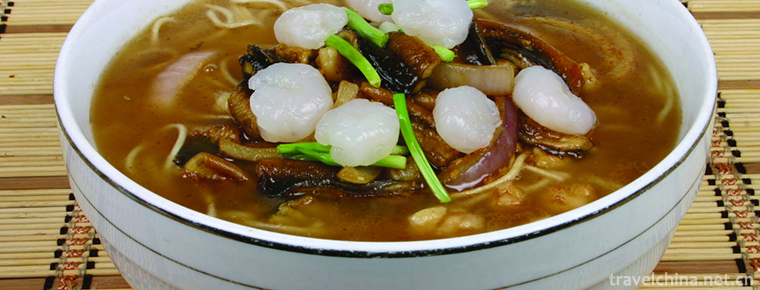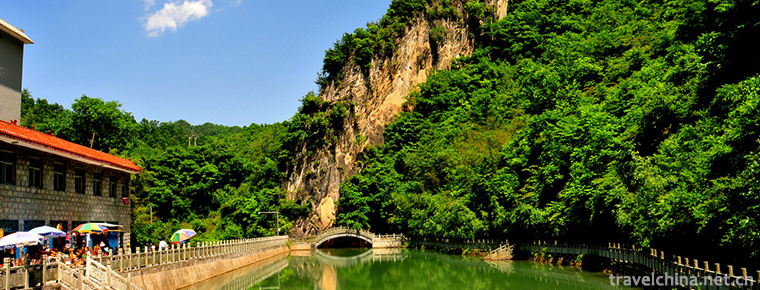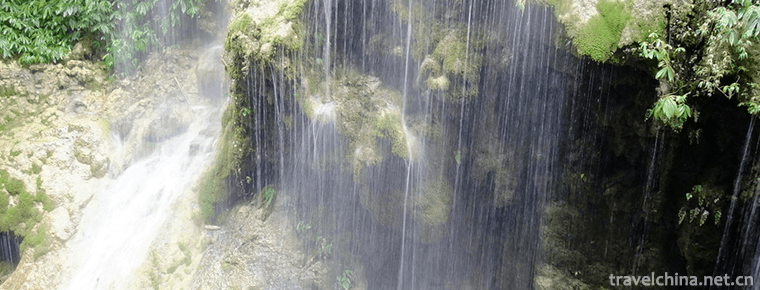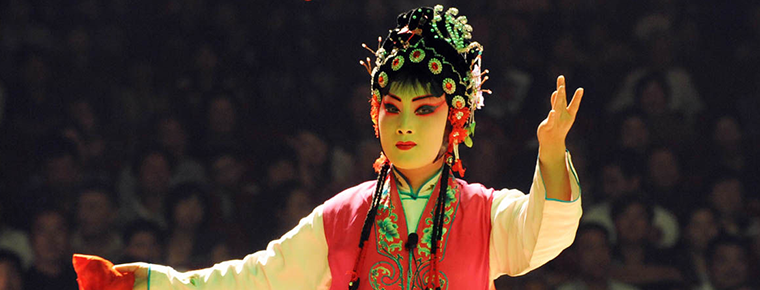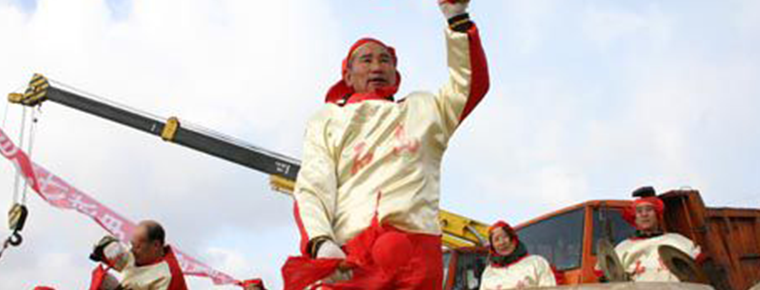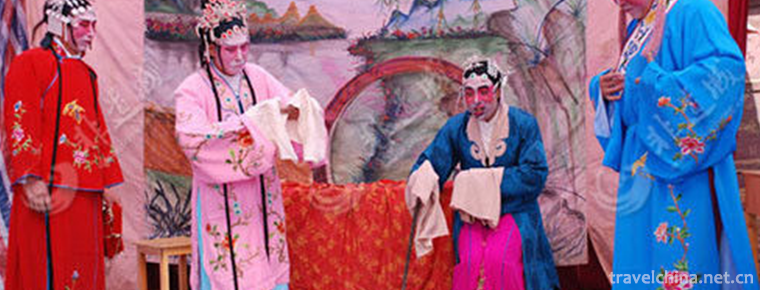The Myth of West Queen Mother
The Myth of West Queen Mother
Western Queen Mother is also known as "Queen Mother", "Golden Mother", "Old Mother of Yao Chi", "Golden Mother of Yao Chi", "Golden Mother of Xichi", "Fairy Mother", "Ah Mother", "Golden Mother", "Golden Mother Yuanjun", "Golden Mother Niang" and so on. The image of the West Queen Mother has undergone many transformations, from the God of half man and half beast, image ferocity, plague and punishment, to the goddess of good fortune and the goddess of heaven, and then to the goddess of creation who nurtured all things. Different images and beliefs in different historical periods have made the Queen Mother of the West a "goddess of thousands of faces" in Chinese culture.
From the earliest myths and legends, the age of the ancient tribe of the West Queen Mother was roughly in the "Five Emperors" era. However, because the Five Emperors era is a legendary era, the boundaries of the tribes are not clear and there is no basis for it. Since ancient times, there have been records of the Queen Mother. When Li Shangyin, a poet in the late Tang Dynasty, traveled to Jingchuan, he wrote in his poem: "The mother of Yaochi leaned against the window to open, the song of Huangzhu moved to mourn, and the eight steeds traveled 30,000 miles a day, so what could not happen to the king of Mu again?" The meeting between King Xiwangmu and King Zhou Mu is a portrayal of the harmonious coexistence of the Western and Eastern Central Plains nationalities. The story of Emperor Hanwu also contains a description of the Emperor Xiwangmu: "Shortened, graceful and beautiful, with an absolute face." She donated Xiantao, which had been married only three thousand years ago, to the heroic Emperor Hanwu, showing her deep love and infatuation.
On November 11, 2014, the myth of the West Queen Mother was approved by the State Council and listed in the fourth batch of national intangible cultural heritage list.
Myths and legends
According to the "Hainei Western Classic", Kunlun Mountain is the residence of the Queen Mother of the West. The Kunlun Mountains are located in Xinjiang, Tibet and Qinghai. However, the Central Plains nation knows Kunlun, which is the geographical concept of the west after the Warring States Period. It is not as clear as the bystanders that the Queen Mother of the West lives in Kunlun. Because the West Queen Mother is a widely respected ancestor of the Han nationality, and now under the Kunlun Mountains is a minority area, there is no special worship of the West Queen Mother among the minority nationalities. This shows that the West Queen Mother is not the ancestor of the local minorities. It also shows that the ancient West Queen Mother tribe was integrated into the Central Plains nationality very early, and now it does not exist alone. Otherwise, the legend of the West Queen Mother will not exist in the Han culture, but in the minority culture under the Kunlun Mountains today.
The Queen Mother of the West in Kunlun is the God of the West of China after the expansion of the western region of China. According to her position in the west, the Queen Mother of the West should have its temples and halls in the Kunlun Mountains, the most important of the Wanshan Mountains in Western China. This is the result of the spread of the culture of the Western Queen Mother. According to the boundaries of the western part of China as defined in the preceding remarks and the ownership of the ancient tribe of the Western Queen Mother, as the ancestors of the ancient Rong people, the ancient tribe of the Western Queen Mother can only live in the upper and middle reaches of the Jing, Wei and Luo rivers, and its ancestral temples should also be in this area.
From the architectural contents of the Palace of the Queen Mother of Huishan in Jingchuan, we can see that it is not a simple relic like a temple or a pool in other places, but a special and complete sacred place for the Queen Mother of the West. Jingchuan Huishan Queen Mother Palace is closely related to the Queen Mother of the West in terms of its geographical location, relics, records of many ancient books and local folk beliefs. It is recognized as the ancestral temple where the Queen Mother of the West lived. Since after the Warring States Period, the vast area around Jingchuan Huishan has become the mainland of China, in other words, the western outland, which is inconsistent with the history at that time, has lost the infinite mystery of the gods, and the ancient clan of the West Queen Mother has long been absent, so the literati after the Warring States Period recorded in Kunlun Mountain when sorting out the myths and legends about the West Queen Mother, which is actually the result of the westward migration of the West Queen Mother Culture.
Book Collection of Ancient and Modern Historic Sites of Pingliangfu: "Back to Zhongshan, in the west of the state, three miles, from Kunlun, there is the Queen Mother's Palace, down to Jingshui, a palace mountain. King Mu of Zhou and Emperor Wudi of Han Dynasty tasted it here.
In ancient Chinese history, Hui Zhongshan is a famous mountain on the Silk Road of Han and Tang Dynasties. According to Historical Records of Huns, Huizhong Palace is the palace of emperors of Qin and Han Dynasty, and Huizhong Palace of Han Dynasty returned to Zhongshan in Jingchuan County.
Because Huizhong Palace is located on Huizhong Road, the feudal rulers of Qin and Han Dynasty paid close attention to it. I have been here many times. From this point of view, the story of the date between the West Queen Mother and King Zhou Mu and Emperor Wudi of Han Dynasty is not pure fiction, but inferred and deduced on the basis of certain historical facts.
It is hard to find the documents about the Queen Mother of the West and her earlier return to Zhongshan. It is certain that by the late Tang Dynasty, people recognized Jingchuan County as the hometown of the Queen Mother of the West. In the late Tang Dynasty, Jingchuan returned to Zhongshan, where there was a palace dedicated to the sacrifice of the Queen Mother of the West and the name "Queen Mother's Palace".
Although the ancient kingdom has disappeared in the dust of history, it still leaves traces of its existence for future generations. Twenty kilometers southwest of Tianjun County, there is a cave more than ten meters deep on the west side of an independent small mountain. According to scholar's textual research, this is the residence of the ancient Princess of the West Queen Mother more than 5000 years ago. It has been named the West Queen Mother's Stone Room. There are various rock paintings and scriptures and paintings written by monks and Taoist inscriptions in the stone room. On the opposite side of the stone chamber was the West Queen Mother Temple, which had collapsed into a flat ground. Heritage archaeologists unearthed precious cultural relics such as Han Wadang with the inscriptions "Changle Weiyang" and "Changle trillion" here, which showed that the site of the West Queen Mother Temple belonged to the Han Dynasty, thus proving that as early as the Han Dynasty, it was recognized that the stone chamber had an inseparable link with the West Queen Mother.
Myth Evolution
The mythological story of the Queen Mother of the West has undergone two evolutions.
The Han Dynasty is the first stage of the evolution of the myth and legend of the West Queen Mother. During this period, the Queen Mother lived in the cave of Yushan Mountain (also known as Kunlun Mountain) in the west. She was a monster with a human face. In addition, there were monsters with horns, leopard stripes and barking voices on the mountain, namely cunning, and three green birds with red feathers and a preference for fish.
Later in the book, the image of the West Queen Mother in the Biography of Mu Tianzi has changed greatly. The image of the West Queen Mother has changed from the evil god of half man and half beast to a lady of emperor's origin and sentiment. She can reciprocate poems with Mu Tianzi and show her graceful and noble temperament in her conversation. In The Biography of Emperor Wudi of the Han Dynasty, the Western Queen Mother became a goddess of about 30 years old and with a unique appearance. During the Wei, Jin and Southern and Northern Dynasties, people connected the myths and legends of the West Queen Mother with the historical facts of King Zhou Mu's Western Expedition and Emperor Hanwu's Western Expedition. The image of the West Queen Mother was personified and the legends were deified. Among them, the story of the meeting of King Zhou Mu and the West Queen Mother in Yaochi was widely spread and had a The image of the Queen Mother of the West, which originated from myths and legends, has gradually been perfected and enriched. With the image of the West Queen Mother changing from old to young and from wild to wild, her beliefs were also absorbed by Taoism. The West Queen Mother became the "first fairy" and the most respected fairy in Taoism, feasting all kinds of gods in the palm of heaven, and managing marriage and child-bearing in the world. After the Tang and Song Dynasties, the West Queen Mother began to become the protagonist of dramas and novels. The image of the West Queen Mother in fiction and opera continues the concept of human-shaped goddess of good fortune and becomes the image of the goddess of heaven in the world of maternity.
During the Ming and Qing Dynasties, treasure rolls and scrolls became important forms for folk religions to express their religious thoughts and participate in spiritual life. The myths, beliefs and other cultural resources related to the Queen Mother of the West are merged into religious treasures by the folk sects. Different from the past, the image and beliefs of the Queen Mother of the West were greatly divided in this period, and her deity and beliefs were unprecedentedly promoted in religious treasures, thus forming a new image and belief about the Queen Mother of the West. In the treasure volumes of "Protecting the Kingdom of Willingness", "Jindan Confession of the Golden Mother of Yaochi", "The Real Sutra of the Saviour of the World" and so on, the Western Queen Mother still has obvious Taoist immortal color. However, when the folk religious sects introduced the God of the West Queen Mother, which has played a decisive role in the popular belief for thousands of years, into the folk religion, they further enlarged the divinity of the Western Queen Mother and transformed it into a supreme god. It integrates creation and salvation.
In addition, in the folk beliefs, the image of the West Queen Mother is further secularized and personalized. The Ming and Qing novels began to imagine the West Queen Mother as "the Queen of the World". The West Queen Mother became a kind-mother goddess in the folk beliefs. Unlike orthodox religion, the Queen Mother of West in folk religion is neither solemn and solemn as Sakyamuni in Buddhism nor aloof and lofty as Sanqing in Taoism. Instead, she shows the general concern for the world from time to time, which is different from the image of the Queen Mother of West in the previous Taoist system. It is a new feature of the image of the Queen Mother of West since the Ming and Qing Dynasties.
The rise and spread of Baojuanliu folk religion in the Ming and Qing Dynasties further brought the belief of the West Queen Mother overseas. In the late years of Daoguang, a folk religion introduced into Fujian Province was renamed "Congenital Religion", but it still continued the tradition of Qinglian Religion, with the golden mother of Yaochi as the supreme, and gradually spread to the South Ocean with the footsteps of the Chinese people. The belief and folk religion of the Queen Mother of the West, with Baojuan as its carrier, have been spreading to North Borneo, Malaya Peninsula and Siam in Southeast Asia. The time when the belief of the Western Queen Mother was introduced into Taiwan was roughly the same as that of the Southern Ocean.
The main reason why the belief of the West Queen Mother has lasted for a long time lies in her priesthood of "immortality" and "delivering children" after she was integrated into Taoist culture. Since ancient times, the Chinese nation has attached great importance to the continuation and existence of life. Immortality, the prosperity of future generations and the peace of life are the most basic aspirations of the general public. The belief of the West Queen Mother greatly caters to the desire of worshippers for longevity and succession, so it is highly respected and loved by ordinary people.
Mythological Value
The myth of the West Queen Mother is not only well-known and widely spread, but also complicated in content. Researchers generally believe that besides the value and influence of mythology itself, it also involves issues related to ancient Chinese history, ethnic history, primitive culture and religion, Taoism, geographical evolution and the history of transportation between China and the West. It has certain value and significance in the study of general cultural history.

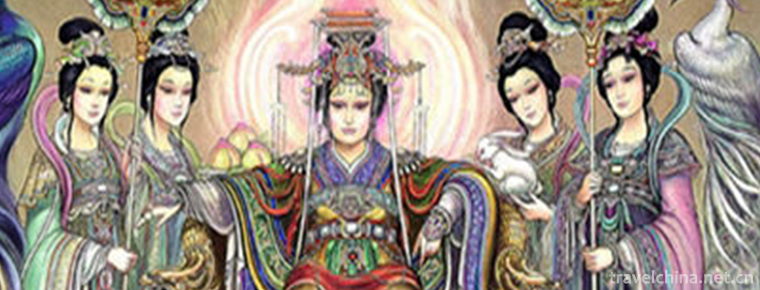
-
Noodles with quickfried eel shreds and shelled shrimps
Shrimp fried eel noodles is a famous traditional food in Kui yuan hall, Hangzhou City, Zhejiang province. When the shrimp is cooked with fried eel noodles, select the strong fresh eel,.
Views: 158 Time 2018-10-27 -
Jinsi Gorge Scenic Area
Jinsi Gorge Scenic Area of Shangluo City, Shaanxi Province, is located in the hinterland of Xinkailing in the southeast of Shangnan County, Shangluo City..
Views: 111 Time 2018-12-12 -
Waterwheel Garden
On August 26, 2005, Lanzhou, known as the "Water Vehicle Capital", built a Water Vehicle Expo Park, which reproduced the spectacular scene of water vehicles on both sides of the Yellow River.
Views: 216 Time 2019-02-08 -
Water Curtain Gorge Scenic Area
Shuixian Gorge Scenic Area is located in the southern mountain area of Jinan, Liubu, the first town of ecotourism in Shandong Province. Covering an area of more than 6000 mu, Jinan's No. 1 Peak Ladder.
Views: 170 Time 2019-02-13 -
Two clip string
Two chords, also known as the "big five tones" by the masses. One of the traditional Chinese operas. It is mainly popular in Western Shandong, Eastern and Northern Henan, .
Views: 126 Time 2019-04-28 -
Jiaodong drum
Jiaodong Drum is a folk folk folk art form which originated in the coastal counties of Jiaodong Peninsula. It has a history of more than 260 years so far. It originated from the blind.
Views: 316 Time 2019-05-06 -
Brow tune
Meihu Opera is a local traditional drama in Shaanxi Province. From the development of the floor stall rap and social fire, the floor stall and social fire performances always focus on singing. Its act.
Views: 159 Time 2019-06-01 -
Beijing Institute of Fashion Technology
Beijing Garment College was founded in February 1959, formerly known as Beijing Textile Technology College. In July 1961, it was renamed Beijing Chemical Fiber Engineering College. It was a key univer.
Views: 332 Time 2019-09-06 -
Jintang Yunding mountain scenic spot
Jintang Yunding mountain is located in the middle section of Longquan Mountain in Jintang County, Chengdu. The scenic spots include Yunding mountain, Hantan ancient ferry, Jintang small Three Gorges of Tuojiang River.
Views: 203 Time 2020-11-05 -
Leshan Education
In 2018, Leshan Normal University, School of engineering and technology of Chengdu University of technology and Leshan vocational and technical college enrolled 16051 students, including 52775 students, 13837 graduates and 2509 full-time teachers..
Views: 352 Time 2020-12-17 -
Leshan Sports
In 2018, Leshan City organized a team to participate in the 13th Sichuan Provincial Games and won 19 gold medals, 25 silver medals and 47 bronze medals. 63 provincial-level sports fitness projects were established, and 279 municipal level national fitness.
Views: 301 Time 2020-12-17 -
Yibin science and technology
In 2019, there are 34 new high-tech enterprises, 13 provincial science and technology achievements transfer and transformation demonstration enterprises, 2 provincial science popularization bases and 6 Municipal Science Popularization base.
Views: 314 Time 2020-12-18
